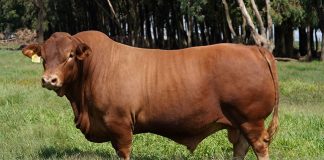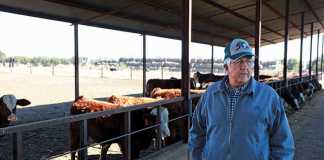The measurement of the amount of protein contained in animal feed is based on the atomic mass of nitrogen contained in the molecule of the substance. Multiply this by 6,25 to arrive at the potential protein percentage of the food. Urea, for example, contains 46% nitrogen and therefore has a potential protein value of 287,5%. It has no energy value but can potentially generate volatile fatty acids through the action of rumen microbes.
Acetic acid, proprionic and lactic acid are all energy sources. Protein can generate energy as it contains oxygen, carbon and hydrogen, the building blocks of energy, but energy cannot make protein. Microbes need nitrogen to grow after multiplying through the action of an energy source such as sugar, starch, cellulose and hemicellulose. This happens every 20 minutes or so.
In the 1960s working with the late Dr Barney van Niekerk, we found that supplying non protein nitrogen (NPN) to beef cattle on winter veld was far more effective in maintaining body weight than the addition of maize meal to the diet. With supply shortages and the increasing cost of natural protein oil cake NPN can effectively be used to augment protein needs. Other sources of NPN are broiler and layer litter, both of which contain uric acid. Chicken litter should only be used if livestock has been inoculated against botulism.
NPN is ideal for upgrading the nutrient value of low grade fodder such as veld hay, cereal straw, maize stover, silages, cane tops etc. Milking cows with a milk urea nitrogen (MUN)value of below 16 can comfortably be fed urea at an inclusion rate of 1,5% of total diet. It is advisable to mill poor quality fodder and add a little water or molasses to ensure that the urea prills dissolve. It is not essential to buy feed grade urea as the only difference between urea used as a fertiliser and feed grade urea is the small percentage of biuret contained in the latter.
Where milling is not possible, add liquorice mix as follows; thoroughly dissolve 2kg salt and 5kg urea in 20l to 30l water. Pour into 200l drum. Add 25kg molasses and top up with 200l water. Apply by watering can, 15l to 20l for every 100kg of low grade fodder.
Malcolm Stewart-Burger founded the Society of Master Dairymen and designed the Maxi Milk System. He is a part-time consultant to Nutex Feeds and De Heus. Contact Malcolm at [email protected]. Please state ‘Milking for profit’ in the subject line of your email.













